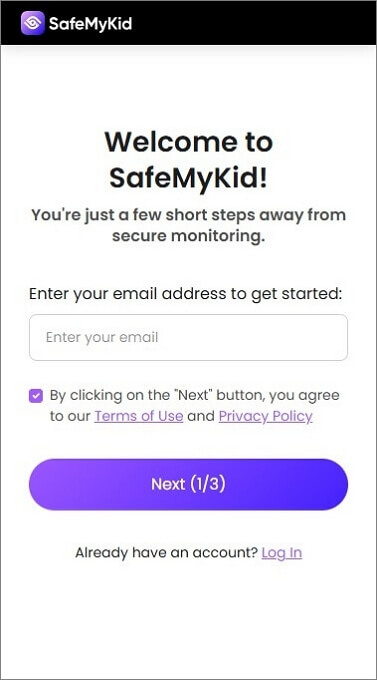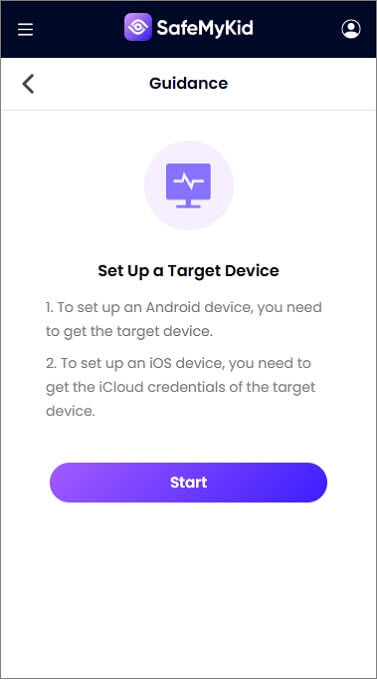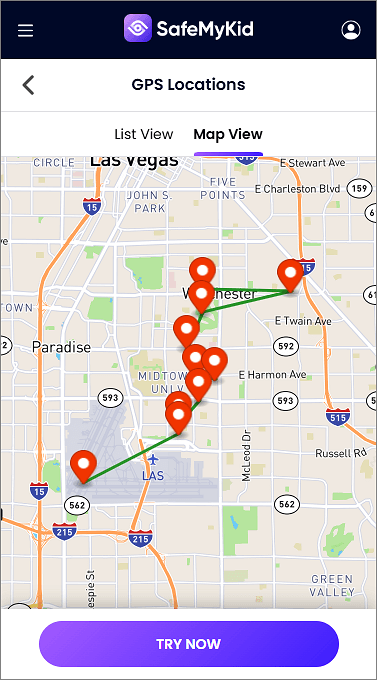How Do Phone Tracking Apps Work: Understanding The Technology Behind Mobile Tracking

The question "how do phone tracking apps work?" has become increasingly relevant as families seek to ensure children's safety, businesses protect company assets, and individuals manage multiple devices in our interconnected digital world.
![]()
With proper understanding of the technology and appropriate authorization, phone tracking apps can serve legitimate purposes, including child protection, elderly care coordination, device recovery, and consensual relationship transparency during trust-building phases.
Common Misconceptions about Phone Tracking Apps Working
Several persistent myths about "how phone tracking apps work"can lead to unrealistic expectations or privacy concerns.
Many believe tracking apps work like movie depictions with perfect real-time accuracy everywhere. In reality, accuracy varies significantly based on the environment and available technologies. The misconception that airplane mode completely prevents tracking ignores that some apps can still access cached location data.
Similarly, the belief that turning off GPS disables all tracking fails to account for Wi-Fi and cellular positioning methods. Some assume tracking apps can work without any installation or access, when legitimate apps require proper setup and authorization.
Another dangerous myth suggests VPNs prevent location tracking, when they primarily mask internet traffic rather than GPS or cellular positioning. Understanding these misconceptions helps set appropriate expectations for how phone tracking apps work in practice.
SafeMyKid - The Most Reliable Phone Tracking App

When evaluating solutions for understanding "how phone tracking apps work in practice", SafeMyKid stands out as the premier monitoring platform for families and organizations with legitimate oversight needs.
SafeMyKid provides unparalleled tracking capabilities through advanced technology that combines multiple location methods, including GPS, Wi-Fi positioning, and cell tower triangulation across Android and iOS devices.
Its sophisticated features extend far beyond basic location tracking to include geofencing alerts, location history, real-time tracking, and comprehensive activity monitoring, creating complete oversight documentation for authorized users.
Key Features of SafeMyKid - The Best Phone Tracking App
When determining what makes SafeMyKid the optimal solution for phone tracking, several distinctive capabilities set it apart:
Multi-Source Location Technology - Combines GPS satellites, Wi-Fi networks, cell towers, and Bluetooth beacons to provide accurate location data even in challenging environments like buildings or urban areas.
Real-Time Tracking Engine - Updates location every few seconds during active tracking, showing live movement on interactive maps with street-level detail and satellite imagery options.
Geofencing Alert System - Create virtual boundaries around specific locations and receive instant notifications when the tracked device enters or leaves designated safe zones.
Historical Location Database - Access complete location history with timestamps, addresses, and route reconstruction to understand movement patterns over days, weeks, or months.
How to Set up SafeMyKid Phone Tracking App Effectively
Configuring SafeMyKid for comprehensive phone tracking requires just a few simple steps:
Step 1. Create Your SafeMyKid Account
Visit the SafeMyKid website to register and establish your secure tracking dashboard.

Step 2. Configure The Target Device
For iPhones: You can set up tracking by logging in with the device's iCloud credentials. No physical app installation is required.
For Android Devices: You'll need to download and install the SafeMyKid app directly on the device you want to track (with proper authorization).

Step 3. Access The Complete Phone Tracking Dashboard
Log in to your dashboard to view real-time location, set up geofences, and access comprehensive tracking features.

Once properly configured, SafeMyKid provides continuous location tracking and monitoring, delivering the detailed oversight needed for legitimate family safety purposes.
5 Core Technologies Explaining Phone Tracking Apps Working
When investigating "how phone tracking apps work", technically, several interconnected systems combine to enable accurate location monitoring. Understanding these technologies helps users maximize tracking effectiveness.
1. GPS Satellite Positioning System
![]()
Global Positioning System technology forms the foundation of understanding "how phone tracking apps work"for precise outdoor location determination.
GPS tracking components include:
- Satellite signal reception from multiple satellites
- Triangulation calculations for position determination
- Coordinate conversion to readable addresses
- Accuracy enhancement through assisted GPS (A-GPS)
- Integration with device hardware receivers
How GPS tracking functions:
- The phone receives signals from at least 4 GPS satellites
- The app calculates the distance to each satellite using signal timing
- Triangulation determines exact position coordinates
- Software converts coordinates to map locations
- Data is transmitted to the monitoring dashboard
This method excels outdoors with clear sky visibility, providing accuracy within 5-10 meters under optimal conditions. Modern phones use assisted GPS, combining cellular data to improve initial position locks.
The primary limitation is reduced effectiveness indoors or in urban canyons where satellite signals struggle to penetrate, requiring supplementary tracking methods.
2. Wi-Fi and Network-Based Location
Network positioning demonstrates how phone tracking apps work when GPS signals are unavailable, using surrounding wireless networks for location estimation.
Wi-Fi tracking mechanisms:
- Scanning for nearby Wi-Fi access points
- Matching networks to location databases
- Signal strength analysis for proximity
- MAC address identification
- Crowd-sourced location mapping
Implementation process:
- App scans for available Wi-Fi networks
- Identifies unique network identifiers (BSSID)
- Queries location databases for known positions
- Calculates position based on signal strengths
- Combines multiple networks for accuracy
This approach provides reliable indoor tracking and works effectively in urban areas with dense Wi-Fi coverage, achieving 10-40 meter accuracy depending on network density.
The primary advantage is functionality without GPS, while limitations include dependence on Wi-Fi database accuracy and reduced effectiveness in rural areas.
3. Cell Tower Triangulation Technology
Cellular network positioning illustrates how phone tracking apps work using mobile network infrastructure for continuous location monitoring.
Cell tower tracking involves:
- Connecting to multiple cellular towers
- Measuring signal strength and timing
- Calculating distances to each tower
- Triangulating position from tower locations
- Handoff tracking between towers
Technical operation:
- The phone maintains a connection to the nearest towers
- App measures signal data from multiple towers
- Advanced algorithms calculate the probable location
- The tower database provides geographic coordinates
- Continuous updates track movement
This method ensures tracking capability wherever cellular service exists, providing backup when other methods fail, with accuracy ranging from 100-3000 meters based on tower density.
The primary benefit is universal coverage in populated areas, though accuracy varies significantly between urban and rural environments.
4. Bluetooth Beacon Technology
![]()
Bluetooth positioning reveals "how phone tracking apps work"for precise indoor tracking using low-energy beacon technology.
Bluetooth tracking features:
- Short-range radio signal detection
- Beacon identifier recognition
- Proximity measurement through signal strength
- Indoor positioning systems
- Integration with building maps
Beacon tracking process:
- Beacons broadcast unique identifiers
- Phone detects nearby beacon signals
- The app measures signal strength for distance
- Multiple beacons enable position calculation
- Indoor maps provide context
This technology excels for detailed indoor tracking in equipped buildings, providing room-level accuracy for applications like mall navigation or workplace monitoring.
The primary limitation is requiring pre-installed beacon infrastructure, making it supplementary to other tracking methods.
5. Hybrid Tracking Algorithms
Modern apps demonstrate how phone tracking apps work by combining multiple technologies through intelligent algorithms for optimal accuracy.
Hybrid tracking combines:
- Automatic technology selection
- Accuracy-based prioritization
- Seamless technology handoffs
- Power consumption optimization
- Predictive location modeling
Algorithm operation:
- Assess available location sources
- Evaluate accuracy and power requirements
- Select the optimal technology combination
- Merge data from multiple sources
- Apply machine learning for predictions
This sophisticated approach answers "how do phone tracking apps work"in varying conditions by adapting to available resources and accuracy needs dynamically.
The primary advantage is consistent tracking across all environments, though complexity requires advanced development and processing capabilities.
Best Practices for How Phone Tracking Apps Work Effectively
Implementing optimal configurations ensures phone tracking apps work reliably when learning how phone tracking apps work for legitimate purposes.
Successful tracking requires maintaining adequate battery levels through power management settings that balance tracking frequency with battery life. Enable all location services and permissions to allow apps access to GPS, Wi-Fi, and cellular data.
Regular app updates ensure compatibility with the latest operating systems and security patches that might affect how phone tracking apps work.
Configure appropriate tracking intervals based on needs——continuous tracking for real-time monitoring versus periodic updates for battery conservation. Set up geofencing zones strategically around important locations like home, school, or work.
Understanding how phone tracking apps work includes recognizing accuracy limitations in different environments and setting realistic expectations for tracking precision based on available technologies.
Frequently Asked Questions about Phone Tracking Apps Working
Understanding these common questions helps implement phone tracking solutions effectively and legally:
1. How accurate are phone tracking apps?
Accuracy varies based on available technologies and the environment. GPS provides 5-10 meter accuracy outdoors, Wi-Fi positioning achieves 10-40 meters indoors, while cell tower tracking ranges from 100-3000 meters. Most modern apps like SafeMyKid combine multiple methods, typically achieving 10-50 meter accuracy in most conditions.
2. Do phone tracking apps work when the phone is off?
No, phone tracking apps cannot work when a device is completely powered off since all radio communications cease. However, some apps can show the last known location before shutdown. Understanding how phone tracking apps work includes recognizing that they require active device operation for real-time tracking.
3. Can phone tracking apps work without the internet?
GPS location determination works without the internet, but transmitting that location to monitoring dashboards requires data connectivity. Some apps can store location data offline and upload when a connection resumes. This demonstrates how phone tracking apps work with limited connectivity——collecting data locally but requiring internet for remote monitoring.
4. How much battery do phone tracking apps use?
Battery consumption varies significantly based on tracking frequency and methods used. Continuous GPS tracking may reduce battery life by 20-40%, while periodic updates using cellular positioning have minimal impact. Modern apps optimize power usage by adjusting tracking methods based on movement and available power.
5. Do phone tracking apps work internationally?
Yes, GPS satellites provide global coverage, and most tracking apps work internationally. However, data roaming charges may apply for transmitting location data abroad. Some features, like Wi-Fi positioning, may have reduced effectiveness in areas with limited database coverage.
6. How do phone tracking apps work on iPhone vs Android?
iPhone tracking apps often work through iCloud services or MDM profiles due to iOS restrictions, while Android apps can integrate more deeply with system functions. Android allows more comprehensive tracking features through direct app installation, while iOS prioritizes privacy with more limited but still effective tracking methods.
Conclusion
Understanding "how phone tracking apps work" reveals a sophisticated integration of multiple technologies working together to provide location monitoring capabilities.
As technology continues advancing, phone tracking apps work with increasing sophistication, balancing accuracy improvements with privacy protections to serve legitimate monitoring needs effectively.